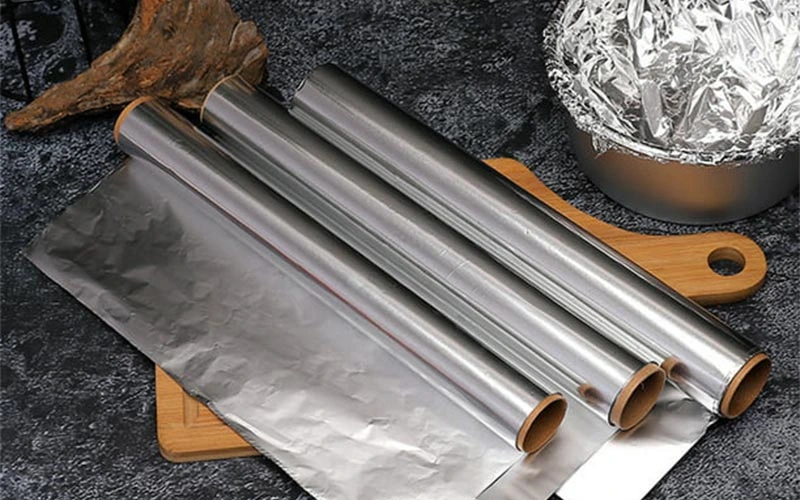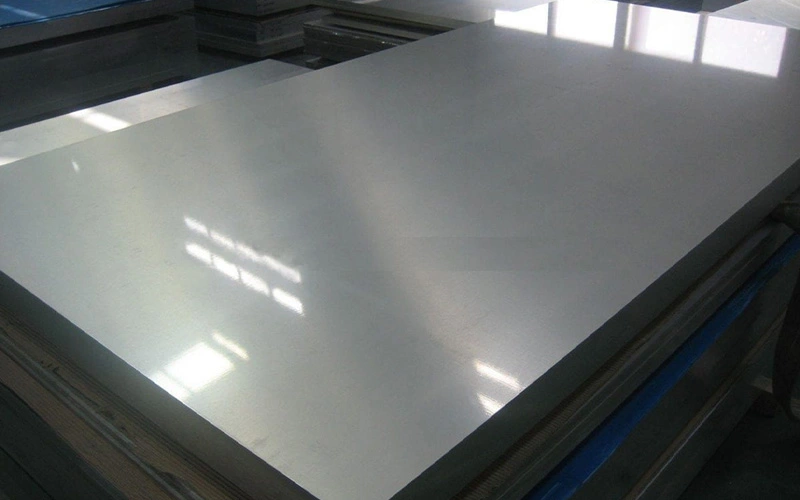Definition of Pure Substances:
Aluminium foil is a hot stamping material that is directly rolled into thin sheets from metallic aluminum. Its hot stamping effect is similar to that of pure silver foil, so it is also called fake silver foil. A pure substance is a type of matter that has a uniform and definite composition. It is composed of only one type of atom or molecule. In other words, all the particles in a pure substance are identical. Pure substances cannot be separated into other substances by physical means such as filtration or evaporation.
There are two main types of pure substances:
Elements: Elements are pure substances that consist of only one type of atom. Each element is represented by a unique symbol on the periodic table, such as oxygen (O), iron (Fe), or carbon (C). Examples of elements include hydrogen, helium, oxygen, gold, and silver.
Compounds: Compounds are formed when two or more different elements chemically combine in a fixed ratio. The resulting substance has its own unique properties that are different from the original elements. Compounds can be represented by chemical formulas, such as water (H2O), carbon dioxide (CO2), or sodium chloride (NaCl). Examples of compounds include water, salt, sugar, carbon dioxide, and ammonia.
Overview Aluminium Foil:
Aluminium foil sheet is a thin sheet material made of aluminum metal, usually made of higher purity aluminum metal, which makes it have good corrosion resistance and conductive properties. In order to improve the performance of aluminium foil, such as enhancing its surface brightness, preventing oxidation, etc., some manufacturers and customers may apply a thin coating or use chemical treatments on the surface of aluminum foil. These additives are generally harmless and meet food safety standards. Although the manufacturing process of aluminum foil is strictly controlled, trace amounts of impurities may still be present. These impurities may come from other metal elements in the original aluminum material, such as iron, silicon, manganese, etc.

Is Aluminum Foil A Pure Substance?
Aluminium foil is generally considered a relatively pure substance, although it may contain small amounts of impurities. From a practical perspective, aluminum foil has very low levels of impurities that do not alter its basic properties or functionality. Therefore, in most cases, we can think of aluminum foil as a pure substance. However, if particularly high-purity aluminium foil is required for some special applications, such as the electronics industry, it may require further purification and processing.
Purity Standards And Testing Methods:
Chemical analysis: Chemical methods can be used to determine the content of various elements in aluminum foil. For example, chemical reagents can be used to acid-dissolve aluminium foil, and the content of the dissolved elements can then be analyzed to determine the presence and content of impurities.
Spectral Analysis: Spectroscopic techniques can be used to detect and analyze elements in materials. Common methods include atomic absorption spectrometry (AAS), atomic fluorescence spectrometry (AFS), and inductively coupled plasma optical emission spectrometry (ICP-OES). These methods can quickly and accurately determine the content of various elements in aluminium foil.
Electron microscopy and energy dispersive X-ray spectroscopy (EDS): Electron microscopy and EDS technology can be used to analyze the surface and internal components of aluminum foil. EDS can determine the presence and distribution of various elements in a material by identifying X-rays emitted from the sample.
X-Ray Diffraction (XRD): XRD is a technique that analyzes the crystal structure of materials. By conducting X-ray diffraction experiments on aluminum foil samples, the composition and structure of the crystals in the sample can be determined, and then its purity can be evaluated.
Aluminum Foil Vs Other Materials:
Aluminum Foil Vs Tin Foil:

Price: Aluminium foil is relatively more economical than tin foil. Aluminium is a common metal with abundant resources and low production costs, so the price of aluminum foil is relatively low. Tin is a rare metal with high production costs, so tin foil is relatively expensive.
Lightweight: Aluminum foil is relatively light, lighter than tin foil of the same area. This makes aluminum foil more convenient during packaging and transportation, reducing the burden and helping to save logistics costs.
Thermal conductivity: Aluminum foil has excellent thermal conductivity and can conduct heat quickly. This makes aluminum foil advantageous in applications such as cooking, baking and keeping warm. Tin foil has relatively poor thermal conductivity.
Anti-corrosion properties: Aluminum has good corrosion resistance and can maintain good stability in humid environments. Tin also has some corrosion resistance, but aluminum foil is more durable.
Formability: Aluminium foil has excellent formability and can easily fold, bend and wrap items, retaining its shape and providing effective closure. The plasticity of tin foil is also very good, but relatively speaking, it is slightly inferior to aluminum foil.
Aluminium Foil Vs Aluminum Sheets:

Thickness: Aluminum foil is thinner than aluminum alloy sheet. Generally speaking, the thickness of aluminum foil is between 0.006mm and 0.2mm, while the thickness of aluminum sheet is usually more than 0.2mm. This makes aluminum foil advantageous in certain applications that require thin sheets of material, such as coverings in packaging, electronics, and cooking.
Moldability: Aluminum foil is very malleable and can easily fold, bend and wrap items, retaining its shape and providing an effective closure. In comparison, thicker aluminum sheets are less malleable and are more suitable for applications that require stronger structures.
Lightweight: Because aluminum foil is so thin, it is lightweight. Compared with thicker aluminum sheets, aluminum foil has more advantages in scenarios where burden reduction or lightweight design is required.
Thermal conductivity: Aluminum foil has good thermal conductivity and can conduct heat quickly. This makes aluminum foil very useful in applications such as cooking, baking, and keeping warm. In contrast, thicker aluminum sheets may be more suitable in terms of thermal conductivity for scenarios that require higher heat dissipation, such as refrigeration equipment or electronic radiators.


